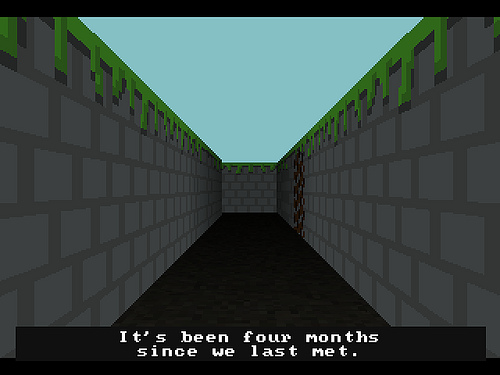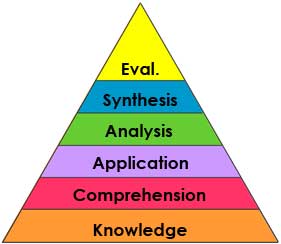A Few Comments on The Legendary Starfy
March 13th, 2013
The Legendary Starfy is the first game in the TOSE-developed, Nintendo-published series of the same name to be published in the west. The games have been around in Japan since 2002, debuting on the GameBoy Advance. The game’s cuteness and the franchise’s former status as a Japan-only hole in Nintendo’s western offering captured my initial interest. After completing the game a few weeks ago, here are my thoughts:
Young Audience Appeal
Cute characters, colourful visuals, and easy gameplay, The Legend of Starfy seems like a great game for kids, with the customisation options and secret treasure (random praise) likely to appeal more specifically to young girls. The dialogue, however, is layered on thick and full of uber clique speak. There’s no way that a 7-year-old is going to understand much of what’s being said.
Mechanics
Starfy has three types of mechanics: traversal, jumps, and attacks. They’re all fairly balanced and unique. The game balances the mechanics so that the player can choose between: swimming and star spinning, gliding and falling, and walking and dashing, ie. two sets of game speeds. The mechanics have some dynamics and nuance, but not a lot. Examples include:
- All jumps and glide are affected by gravity.
- Dash (Starfy’s run) has a slight skid (momentum).
- Star Spin (Starfy’s attack) runs on an invisible cool down, spin too much and Starfy becomes dizzy. The player can also steer Starfy as he attacks.
The transformations primarily allow Starfy to activate specific level elements: they don’t add any new wrinkles to the gameplay. They also lack the nuance and dynamics of Starfy’s regular move set.
In some levels, certain areas are only accessible when playing as Starly, using her exclusive abilities, but the only way the player can play as Starly is if they have a friend to link up with. Since these areas hold treasures, they only way to 100% complete the game is to have a friend who also has a DS and a copy of the game.
The choice of game speed via the mechanics, optional treasures spread throughout levels, and ability to rack up more stars by comboing up enemy attacks allows the player to scale the difficulty.
Level Design
Each world is based around a game idea. For example, changing water levels or swimming in the air through bubbles. The individual game ideas aren’t very interesting, there’s little variation to them, they’re stretched too thin, and are never combined to create deeper, more engaging gameplay concepts. In a Mario game, one of Starfy’s game ideas would be enough for a level. In the Legend of Starfy, they make up seven or eight. To continue this comparison, Starfy’s levels tend to dawdle back and forth between the world’s game idea and unrelated distractions, while Mario’s levels are unified around the one concept. Where each arrangement of level elements in a Mario game offers a newer, increasingly more elaborate take on the game idea (variation), in The Legendary Starfy, each level only offers one or two arrangements based around the game idea, and the variation between each is slight. As a result of all these factors, Starfy’s world lacks a cohesive narrative of gameplay.
Not only are the levels not optimised for gameplay, they’re also far too open. Most of the player’s time is spent holding a button as they wait for Starfy to swim from one point to another. The game is just brimming with excess waiting to be trimmed out, some of which includes whole levels. Take level 8-6 as an example. I can’t believe they didn’t cut this. A rock, paper, scissors boss battle near the end of the game is an equally disastrous example of padding.
I want to thank Chic Pixel for helping me gather my thoughts on this game.
Storytelling Techniques in Judith (Terry Cavanagh)
March 10th, 2013
Judith is a short narrative game by Terry Cavanagh, the guy who did VVVVV and Super Hexagon. You should play it. Only takes 25-30 minutes. Here are some of the ways narrative is delivered in this game:
- The text dialogue sets the context for the interactive sequences. It’s brief and well written, so it’s never intrusive.
- The length of the secret passage creates dead space (where the player can only wait as the avatar moves forward) and thereby anticipation.
- Repeated structures develop simple routines which the player finishes more quickly the more times they complete them. This builds into a climax, adding to the tension as the various revelations unfold. For Judith, the routine is leaving the bedroom, opening the secret passage, and unlocking the next door. For Jeff, this is going to the next room.
- Music is used to set the mood, such as the piano notes at the beginning of each sequence and the prisoner’s cries.
- Judith always begins her part next to the bed. This, along with the dialogue with her husband, creates a sense of time.
- The hardest part of the game, uncovering the secret passage, is also the biggest revelation. So there’s a nice harmony there between difficulty and narrative.
- Forcing the player to leave the secret passage without first prompting them to return the knife or necklace simulates Judith’s uncertainty.
- Control is taken away from the player when Judith runs into the woods. This simulates the character’s fear of her husband and inability to do anything but run away.
- In Judith’s final sequence, the passage door is left open for her (as her husband mentioned in the preluding dialogue). This small difference from the repeated structure asserts a feeling of unease.
If you’re interested, Don’t Look Back, Hero’s Adventure, and American Dream are also great little games that’ll only take a few minutes.
There’s a few good comments made by Jason Rohrer here.
Deep Reading – A Reason to go Offline?
March 1st, 2013
The internet is no place for sustained reading and deep thought.
That’s a strong statement, but it’s one that I feel increasingly adamant about. The form of a media determines the nature of its content, and there are aspects of the internet which dissuade the user from critical thinking. Of course, the internet is an umbrella for many different types of media. For the purpose of this post, I want to discuss the medium you are consuming right now: the article.
From early last year, I started doing most of my reading on my Kindle, a device which, I guess many Kindle enthusiasts would also attest to, has totally changed my reading habits. Almost straight away, I noticed that it was easier to read through my Kindle than through a web browser, as I’d been doing in the past. I’ve become a better reader ever since. After a bit of investigating, I discovered why. Online, long-form text is usually surrounded by:
- images
- hyperlinks
- ads
- video
- social media/comments
With all these distractions demanding your attention—not to mention things outside the browser, such as instant messages, software alerts, time displays, and the visual interface of the operating system—it’s difficult to engage with the text. On Kindle, all of these diversions are stripped away. The only thing that can cause you to lose your concentration is the progress bar at the bottom of the screen, which I can see some people fetishising over, but it’s relatively minor.
The other thing that diminishes the reader’s ability to deep read online is the transition between different types of media. Every time the reader switches between watching a video to writing a tweet to sending an email to reading an article, they must adapt to each format. There’s certainly a skill to juggling several kinds of media, but deep reading is no doubt something that becomes weakened in transition, particularly as the internet favours the most accessible, immediate media: images, video, short text, and search, none of which require committed engagement. When a reader approaches a long-form piece after having skim-read through Google, Wikipedia, and Twitter for the past half hour, despite their best intentions, they’re not in the right head space to consume the text.
Going forward, I am committed to long-form writing on video games. While it does pose its own challenges (more on that in a later article), as far as I see it, it’s the only format that does games analysis justice. Writing is the only medium in which complicated ideas can be clearly conveyed, and it’s only in the long-form that the complex nature of games can be fully unravelled. Given everything I’ve said on the internet and deep reading, it makes no sense for my long-form articles, which require deep reading and engagement, be placed in a medium which constantly tells the reader to stop reading. As the author of such content, it’s my responsibility to slow the reader down and ease them into the analysis, something that I simply can’t do online. So the only responsible thing I can do is to take my writing and put it offline. This doesn’t mean that I’m going to close down the blog, but it does mean that I’m going to be smarter with how I write and position my content.
My plan is to reserve all good long-form articles (anything more than 3 pages, I guess) for future books and use the blog for short-form articles, updates, and stuff that can’t fit anywhere else. As you may have already noticed, I’ve been customising the articles that go onto the site for internet reading. That is, more headings, bullet points, and snappy commentary. This isn’t a bad thing. In fact, it’s a real improvement over what I was doing before. Now, I have a space to bang out some real nuggets of insight and a space to sit and stew over ideas for a prolonged period. Although I’m still settling into this groove, in the long run, I think it’ll work out for the better.
There are a few more ideas that I wanted to bookend the article on. Fittingly, I’ve presented these as a series of dot points:
- Yes, I’m aware that people can still be distracted by the internet when reading on a tablet or a computer, out of browser, but these methods are still better than in-browser reading.
- I think there’s certainly a case to be made for video—it has a lower barrier to entry and allows for more “embedded” analysis—but I’m far too wary of the medium’s tendency to reduce all content into entertainment to engage in it myself (see: Neil Postman’s Amusing Ourselves To Death).
- If you’re interested in deep reading online, then you might want to check out the following:
–Instapaper – This service saves online articles and delivers them, in packages, to your mobile, tablet, or reading device. Very useful. Thanks to Instapaper, I basically do all my online reading on my Kindle.
–Safari’s Reader Function – The little blue button in Safari’s address bar darkens the website and pulls up a white slate with the contents of the article inside, removing the distractions of the website.
Additional Readings





 Game Design Companion: A Critical Analysis of Wario Land 4 - $7.99
Game Design Companion: A Critical Analysis of Wario Land 4 - $7.99 Level Design: Processes and Experiences
Level Design: Processes and Experiences Speed Boost: The Hidden Secrets Behind Arcade Racing Design - $5.99
Speed Boost: The Hidden Secrets Behind Arcade Racing Design - $5.99 Adventures in Games Analysis: Volume I - $5.99
Adventures in Games Analysis: Volume I - $5.99







